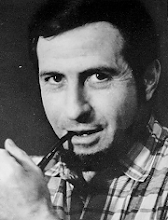
One of the things that I found most interesting while I was in Library school was the concept of the work, expression, manifestation, and then item.
The example that was often used while I was in school was the Wizard of Oz. There is this "thing" we know of as the Wizard of Oz. This is the work. This work has taken the form of several different expressions. The book, the movie with Judy Garland, the musical with Diana Ross, and let's not forget the original stage musical written by Baum himself.
I couldn't help but think of this concept as I watched the latest Star Trek movie. I'm guessing this could be the new standard when budding young library school students discuss this concept.
In this case we have the work called Star Trek. We all understand what this means. The starship Enterprise with Capt. Kirk at the controls, Spock at his side, and Scotty down in the engine room. I think most people watching the new Star Trek movie had no problem accepting the new actors in their roles in some ways because of this concept. The characters acted the way we expected them to for the most part. (I'm still trying to get over the Spock/Uhuru kissy face stuff) When we see a frantic fellow with a scottish accent saying, "Captain, the engines can't take any more!" we instantly understand this is Scotty and we know his character already. When we see the grumpy doctor with the southern accent we know it's McCoy.
In other words the work we call Star Trek is well established at this point.
In this particular case the expression of the work is the script or perhaps J. J. Abram's vision for the new Star Trek movie. Fans are still debating its merit, (it's no Wrath of Khan in my book) but it's a fascinating example of the concept of how an expression relates to a work. We have had the original TV show, the movies, the spinoffs, the books, the fan fiction, and now we have this particular expression which is so much based on the original series.
The manifestation of this expression is the new Star Trek movie. The script and the ideas have been used to create a film. This manfestation is still very popular in the theatres and has been one of the top grossing films of the spring of 2009. In library school terms, "a manifestation is the physical embodiment of an expression of a work."
Finally we have the item. This is a single example of a manifestation. Each movie theatre that plays the film has as an item the reels of film they project. I suppose in the modern world the item is now some sort of digital content. Do modern movie theatres that show digital versions of movies even use reels of film anymore?
Ultimately the new Star Trek movie will be manifested in a DVD format and the item will be available at my local Target. This Star Trek geek will probably buy that item when it's available.
http://www.loc.gov/marc/marbi/2009/2009-01-3.html
PS - Didja notice that when Kirk and Sulu did the free fall onto that platform it was the red shirt that died?!

